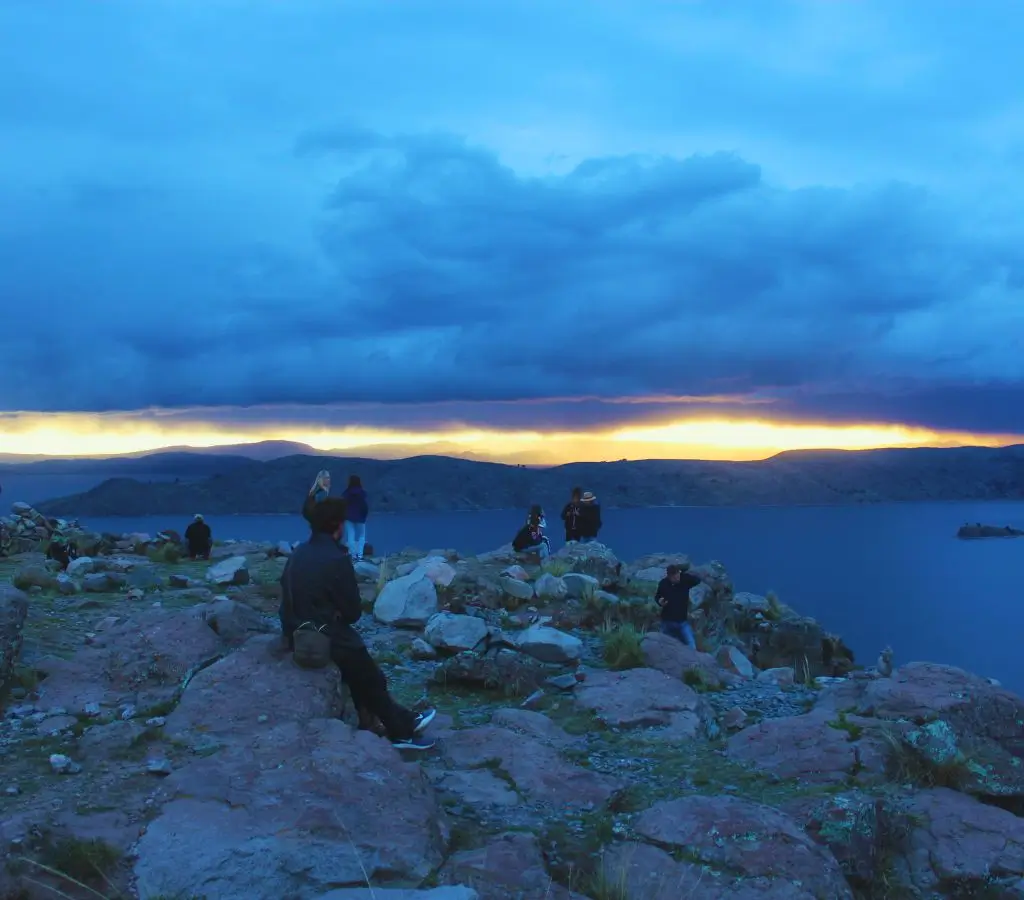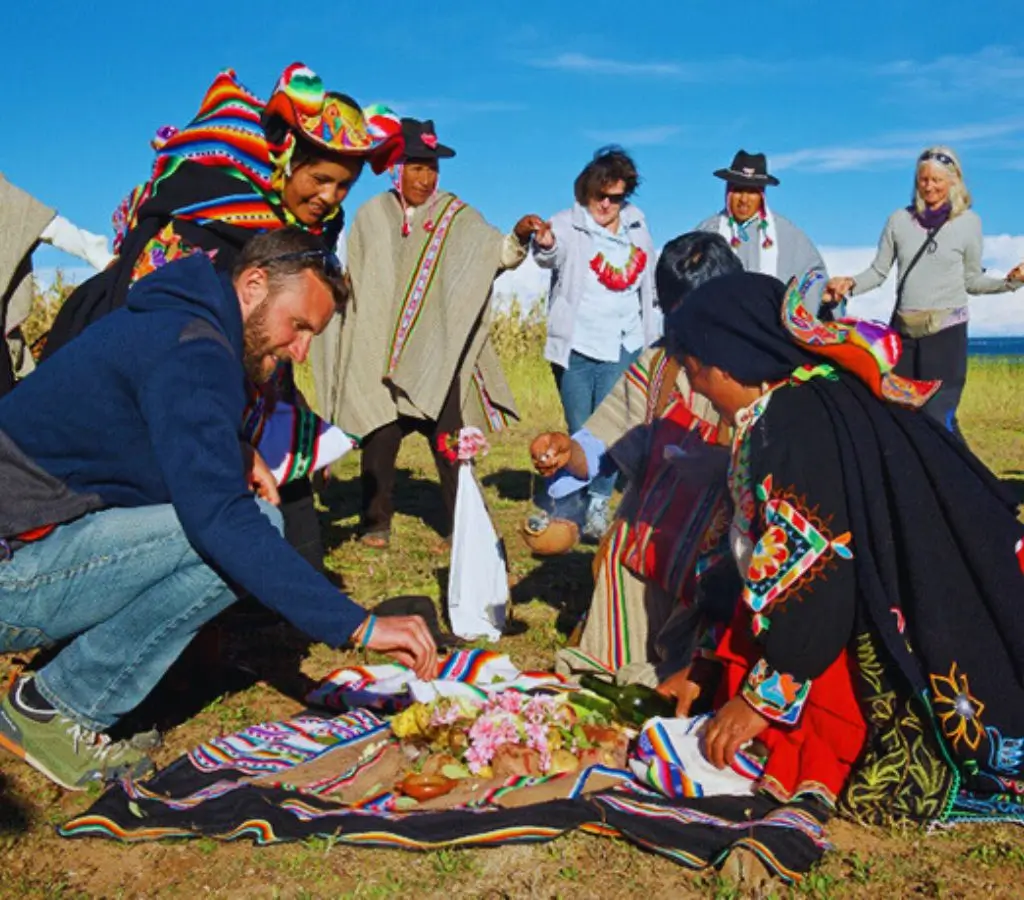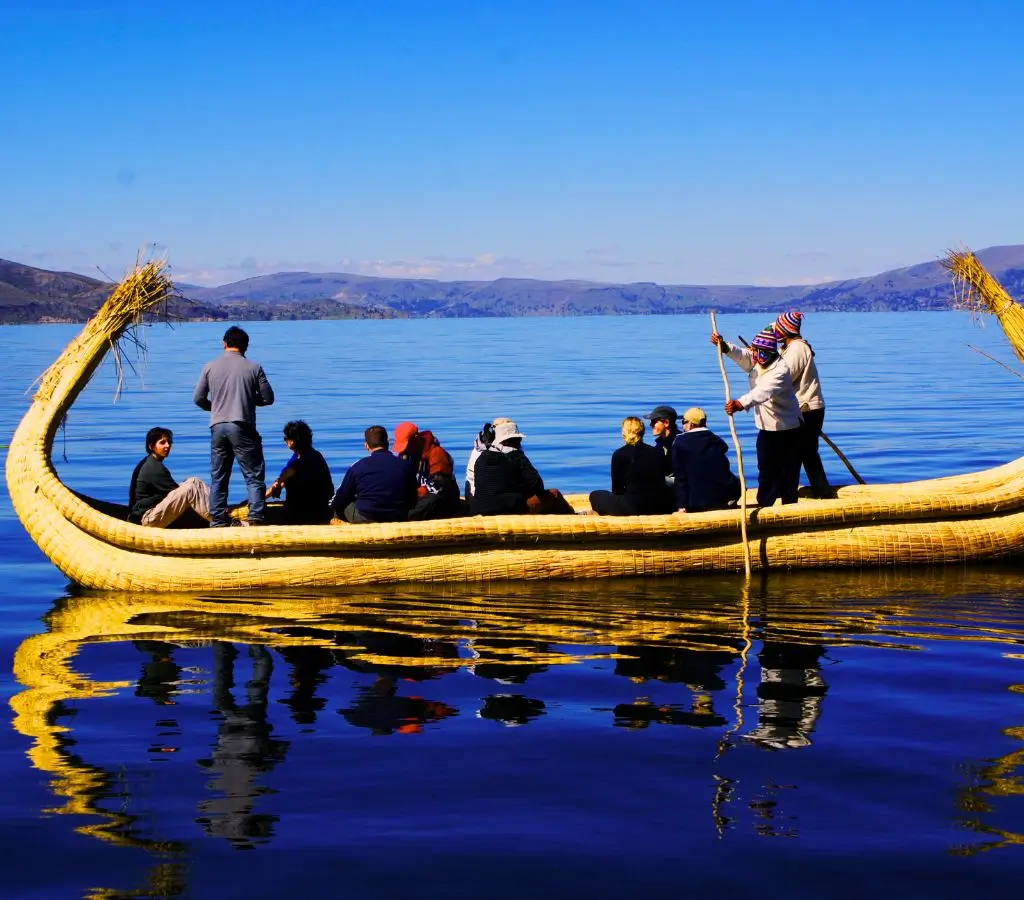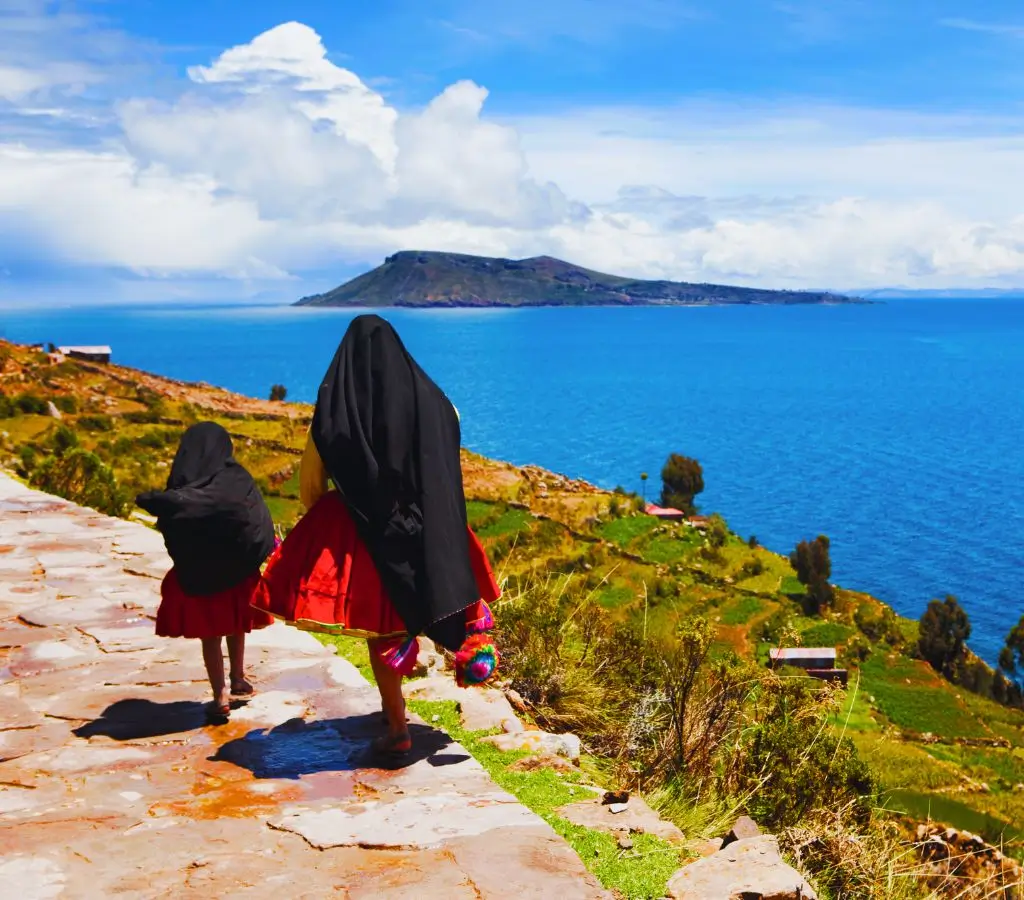Discover Lago Titicaca, located between Peru and Bolivia in the Andes, it is one of the largest lakes in South America and the highest navigable body of water in the world; likewise, experience navigating its waters by visiting the floating islands inhabited by the Uros community.
Dive into the local culture through experiential tourism and immerse yourself in the region's gastronomy, discovering the authenticity of this place, surrounded by the Andes mountains.
Lake Titicaca is located on the Andes Plateau between Bolivia and Peru at an altitude of 3,800 meters above sea level. It is the highest navigable lake in the world and has been home to various indigenous cultures, giving it great cultural and archaeological value.
The name "Titicaca" comes from the indigenous languages of the region, especially Quechua and Aymara; some interpret it as "Puma's Stone", where "titi" means puma and "kaka" means stone, while other theories link it to local mythology, adding a mystical touch to the lake's name.
The Lake Titicaca region is full of legends passed down by generations of indigenous communities. One of the most well-known recounts how the Inca gods, Manco Capac and Mama Ocllo, emerged from the lake to found the Inca Empire, which gave rise to Cusco.
Another legend states that the lake was created by the god Viracocha, who, after exterminating stone giants, formed the first men in a fertile valley. They lived in harmony but were punished for disobeying the prohibition of not approaching the sacred fire.
After their challenge, the men were devoured by pumas sent by the god Apu, the sun, lamenting the tragedy, flooded the valley for 40 days, and only a man and a woman survived, emerging among petrified puma statues. These legends enrich the local culture and provide deep historical context.
Lake Titicaca offers unique experiences, such as boat tours to the Uros floating islands and the opportunity to meet local communities that live on reed boats. Visitors can also explore Taquile Island, famous for its textiles, or Amantaní Island, where they can enjoy experiential tourism.
These activities provide an authentic insight into Andean traditions and lifestyle.


The Uros Floating Islands, handmade with reeds, are home to the community that lives there, preserving its ancestral traditions. Visitors can learn about the construction of the islands and local customs.
By interacting with the locals, tourists can participate in craft activities, living an authentic and memorable cultural experience.

Taquile Island stands out for its culture and landscapes, being famous for its traditional textiles. It is considered an Intangible Cultural Heritage of Humanity by UNESCO. When visiting the island, tourists can enjoy local life, textile craftsmanship, and panoramic views of the lake.
This experience offers an Incan cultural immersion for those who value traditions and local art.

There are several transportation options to reach Lake Titicaca, allowing travelers to choose according to their preferences and needs, each offering a different experience.
Land transportation is a popular option to reach Lake Titicaca, allowing you to enjoy the Andean landscape during the journey. There is a variety of bus services and private vehicles with different prices to suit various budgets.
You can take this transportation from Lima, Arequipa, or Cusco to Puno, with travel times varying depending on the departure region. Each route offers a different experience along the way.
Travelers can also use the Inca Manco Cápac Airport in Juliaca, or they can fly to Cusco and then take a bus to Puno. This option is faster, ideal for those with limited time. This way, you can save travel time and quickly access the lake region.
Another option is to travel by train with the exclusive service of Peru Rail. This journey offers a unique experience, combining comfort and stunning views of the Andes mountain range, allowing you to enjoy a scenic route while getting closer to the lake.
Get ready to enjoy this great adventure. We are a reliable agency, you can contact us at the number +51 944 714 563 or by email at info@illapa.com. Let us take care of everything, Peru is waiting for you.


